There has been an inn on this site since the 13th century. It is said to have got its name in Tudor times, when the silver greyhound was the badge of the royal messenger. In 1851, The Greyhound was billed as ‘Commercial Inn, Greyhound Corn Exchange, Excise Office’. In 1910, the building’s exterior displayed the words ‘The Greyhound Hotel’. It is possible that it was also called The Black Greyhound at one time, presumably because there was a ‘White Greyhound’ next to The Bull Hotel.
A photograph and text about The Greyhound Hotel.
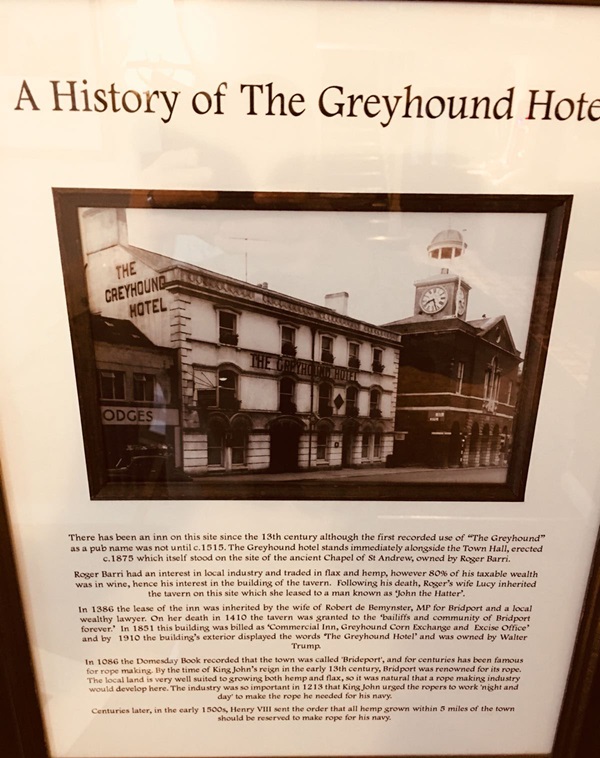
The text reads: There has been an inn on this site since the 13th century, although the first recorded use of The Greyhound as a pub name was not until c1515. The Greyhound Hotel stands immediately alongside the Town Hall, erected c1875 which itself stood on the site of the ancient Chapel of St Andrew, owned by Roger Barri.
Roger Barri had an interest in local industry and traded in flax and hemp, however 80% of his taxable wealth was in wine, hence his interest in the building of the tavern. Following his death, Roger’s wife Lucy inherited the tavern on this site which she leased to a man known as John the Hatter.
In 1386 the lease of the inn was inherited by the wife of Robert de Bemynster, MP for Bridport and a local wealthy lawyer. On her death in 1410 the tavern was granted to the bailiffs and community of Bridport forever. In 1851 this building was billed as Commercial Inn, Greyhound Corn Exchange and Excise Office and by 1910 the building’s exterior displayed the words The Greyhound Hotel and was owned by Walter Trump.
In 1086 the Domesday Book recorded that the town was called Brideport, and for centuries has been famous for rope making. By the time of King John’s reign in the early 13th century, Bridport was renowned for its rope. The local land is very well suited to growing both hemp and flax, so it was natural that a rope making industry would develop here. The industry was so important in 1213 that King John urged the ropers to work night and day to make the rope needed for his navy.
Centuries later, in the early 1500s, Henry VIII sent the order that all hemp grown within 5 miles of the town should be reserved to make rope for his navy.
A print and text about the story of the silver greyhound.
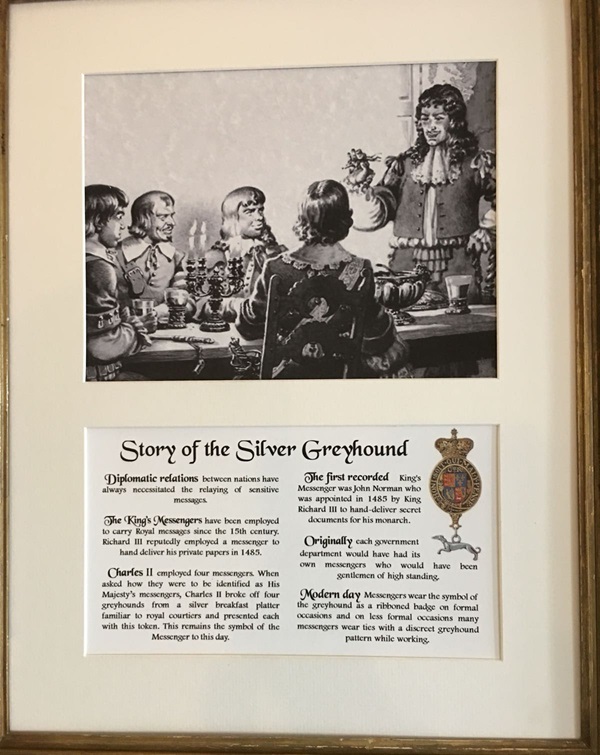
The text reads: Diplomatic relations between nations have always necessitated the relaying of sensitive messages.
The king’s messengers have been employed to carry royal messages since the 15th century. Richard III reputedly employed a messenger to hand deliver his private papers in 1485.
Charles II employed four messengers. When asked how they were to be identified as His Majesty’s messengers, Charles II broke off four greyhounds from a silver breakfast platter familiar to royal courtiers and presented each with this token. This remains the symbol of the messenger to this day.
The first recorded king’s messenger was John Norman who was appointed in 1485 by King Richard III to hand deliver secret documents for his monarch.
Originally each government department would have had its own messengers who would have been gentlemen of high standing.
Modern day messengers wear the symbol of the greyhound as a ribboned badge on formal occasions and on less formal occasions many messengers wear ties with a discreet greyhound pattern while working.
A plaque taken from when the building was the Commercial Inn, Greyhound Corn Exchange and Excise Office.
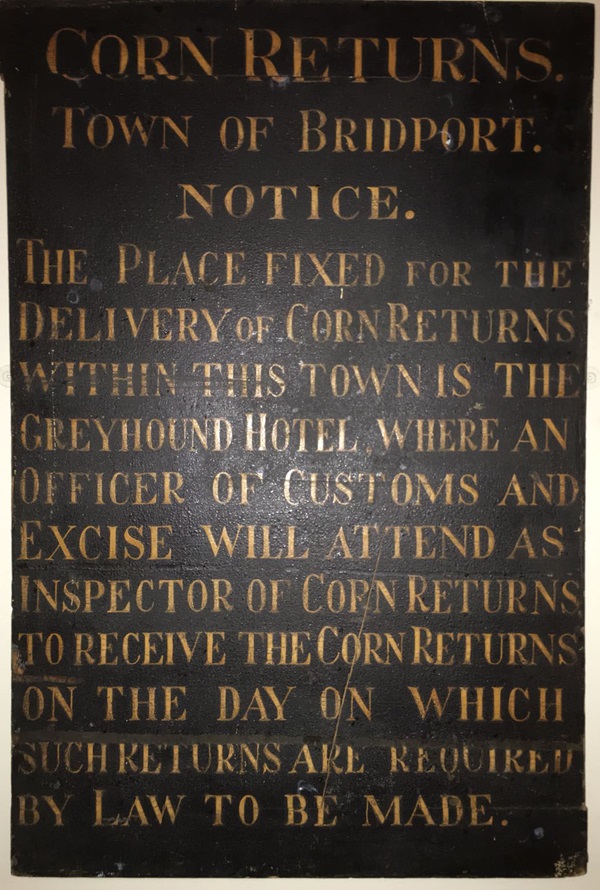
A copy of an act referring the British Corn.
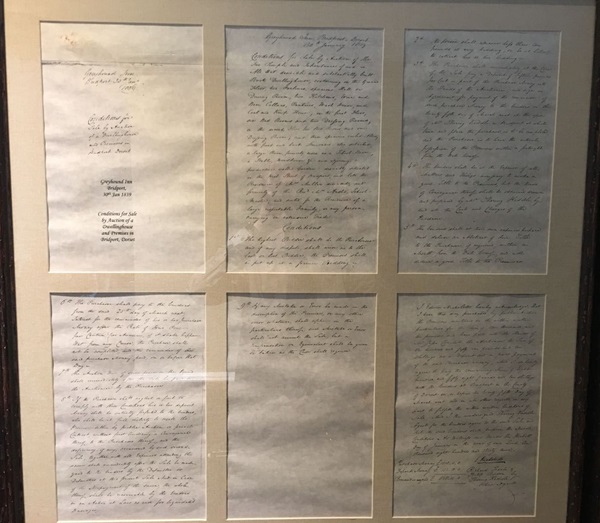
An act to ascertain the average prices of British Corn from time to time was passed in The Statues of the United Kingdom of Great Britain and Ireland, Volume 29 in 1827. Listing Bridport, the act states, ‘The purpose of duly collating and transmitting such weekly returns as aforesaid, there shall be appointed in each of the said Cities and Towns, in manner hereinafter directed a fit and proper person to be Inspector of the Corn Returns.
Old signage for The Greyhound Hotel.
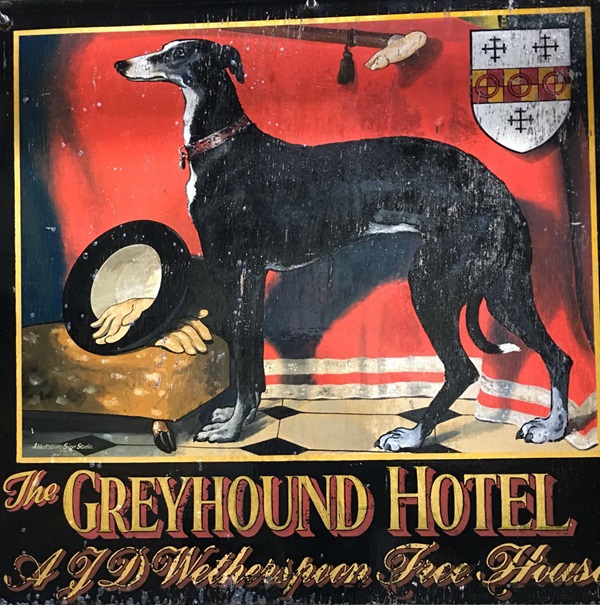
External photograph of the building – main entrance.
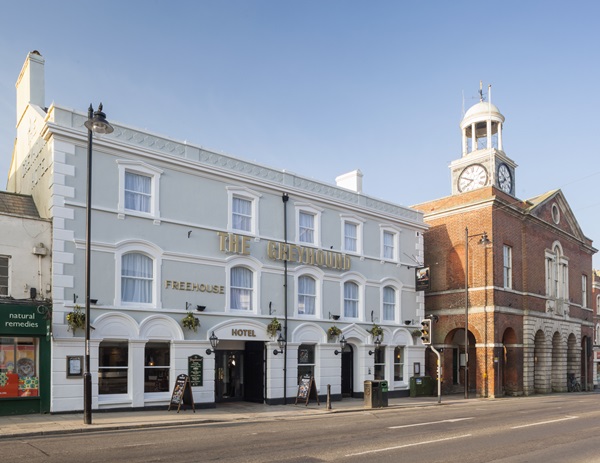
If you have information on the history of this pub, then we’d like you to share it with us. Please e-mail all information to: pubhistories@jdwetherspoon.co.uk